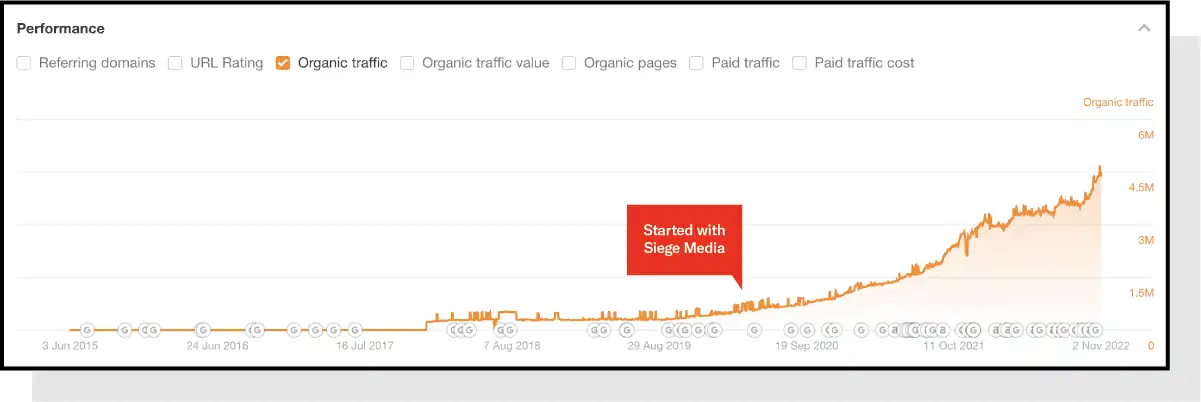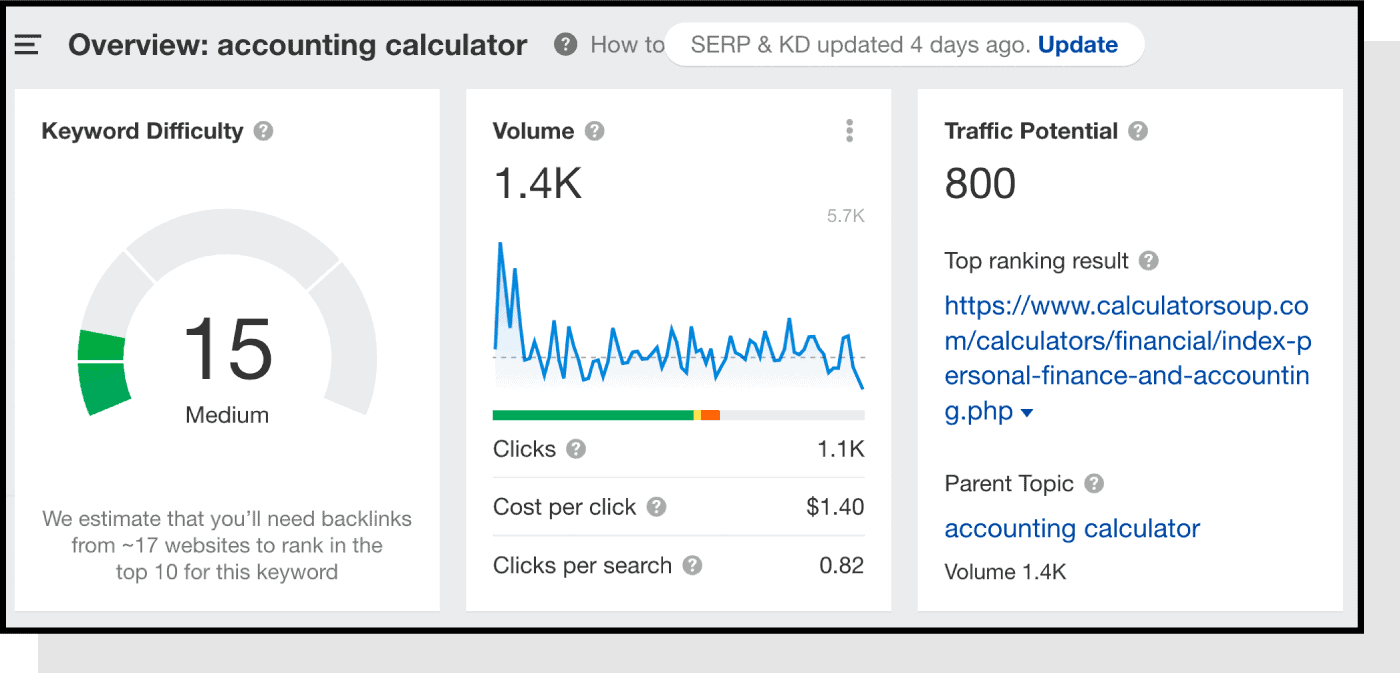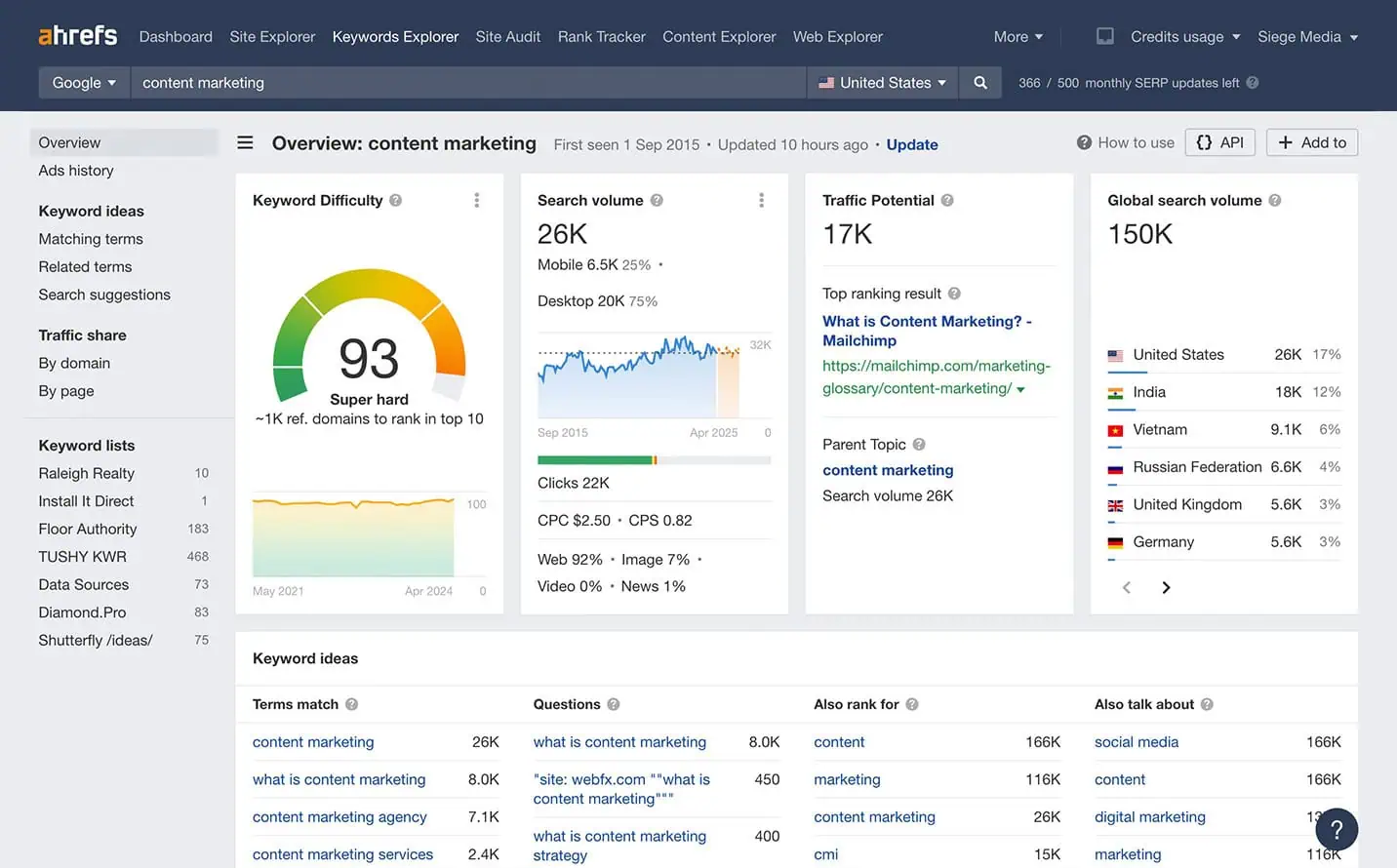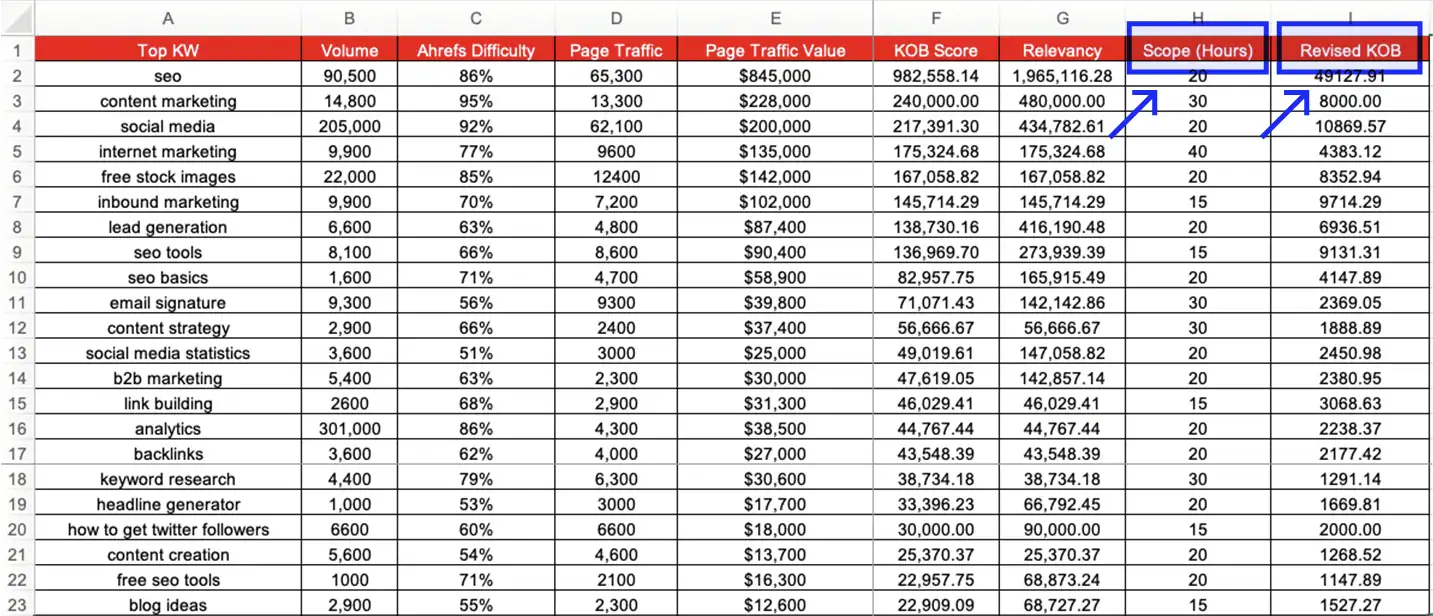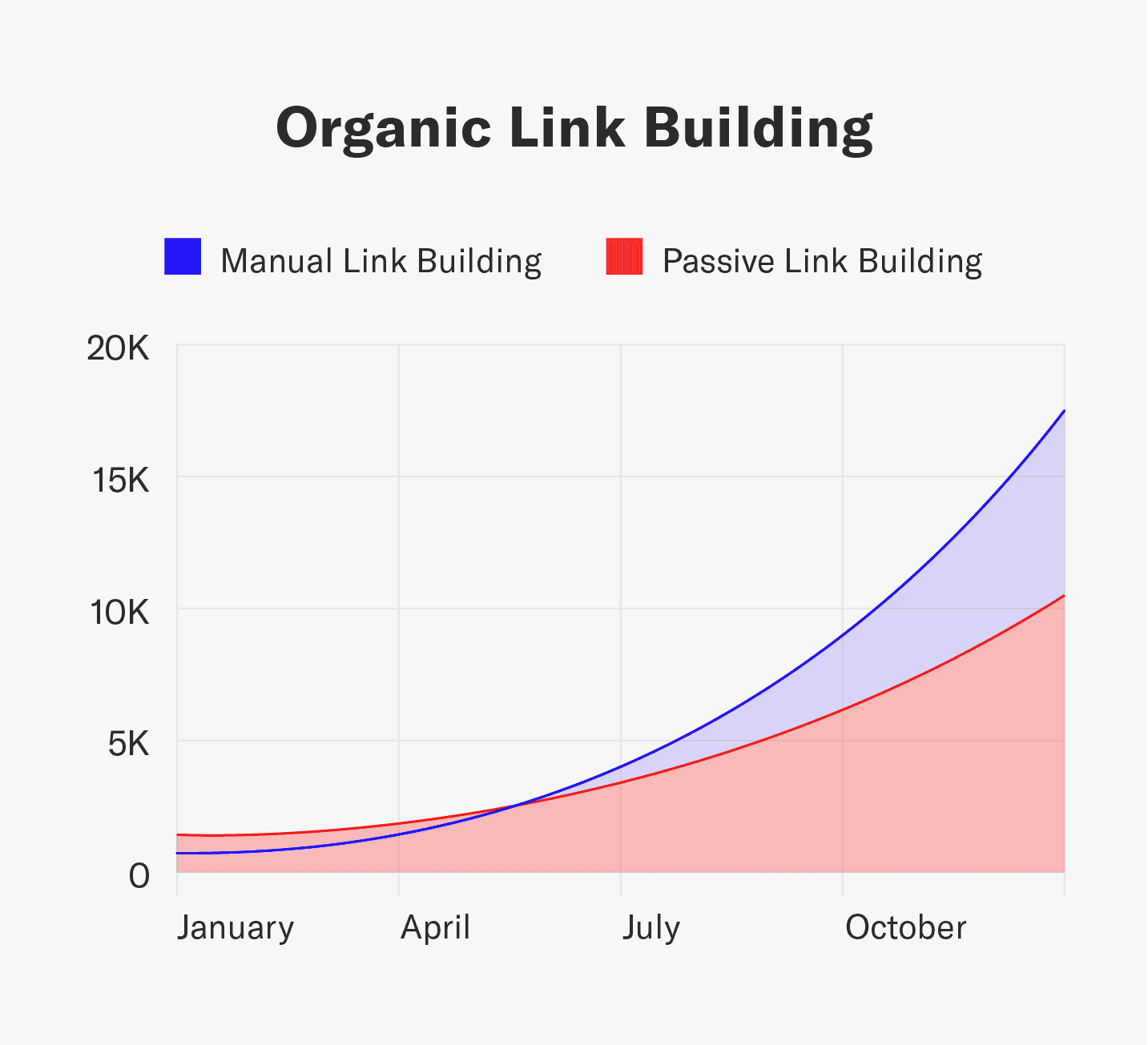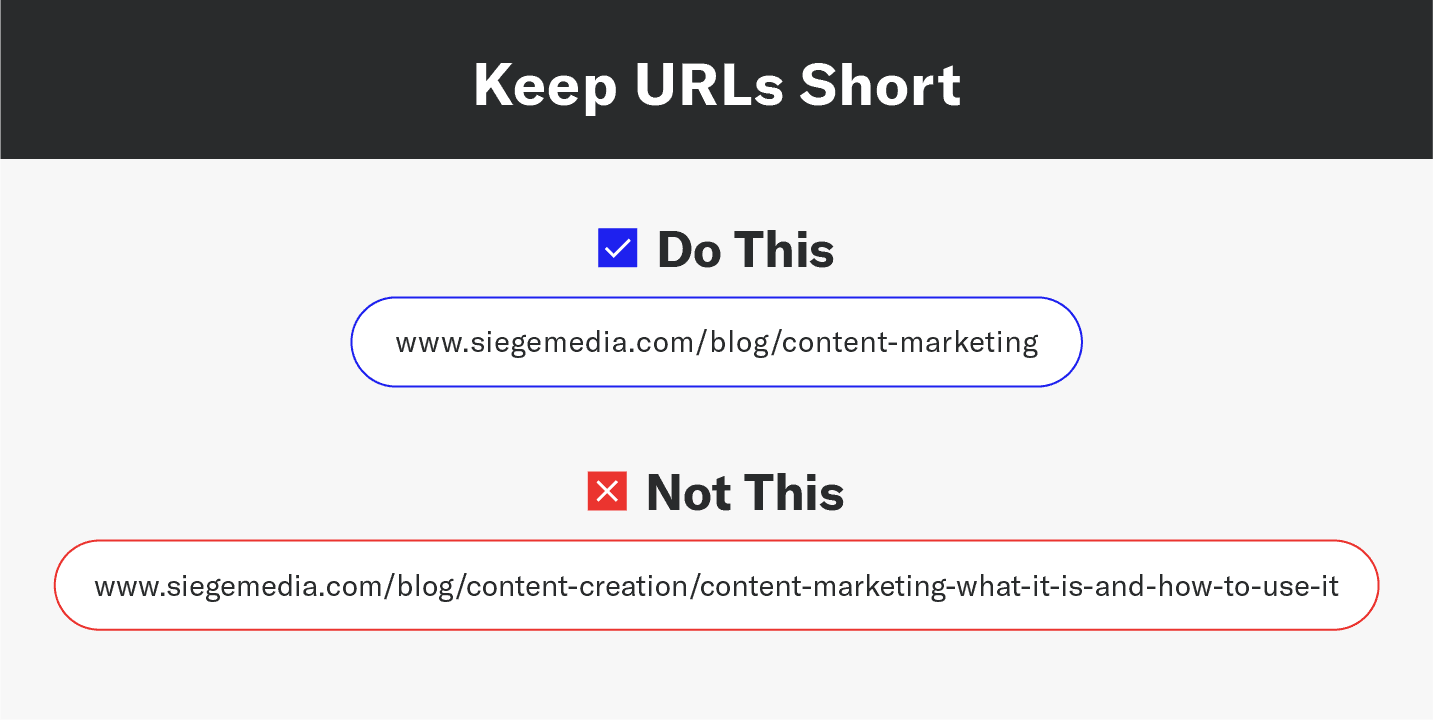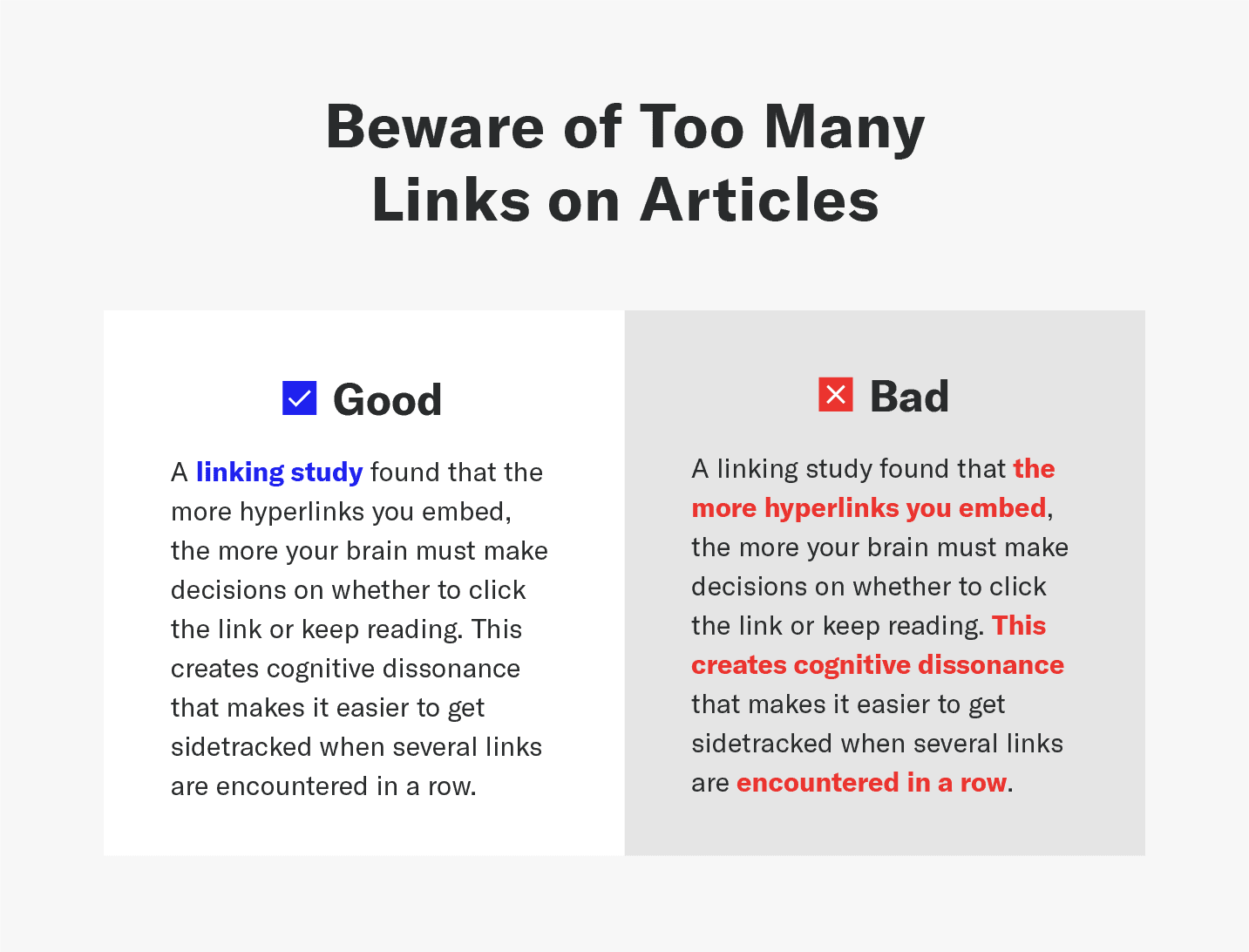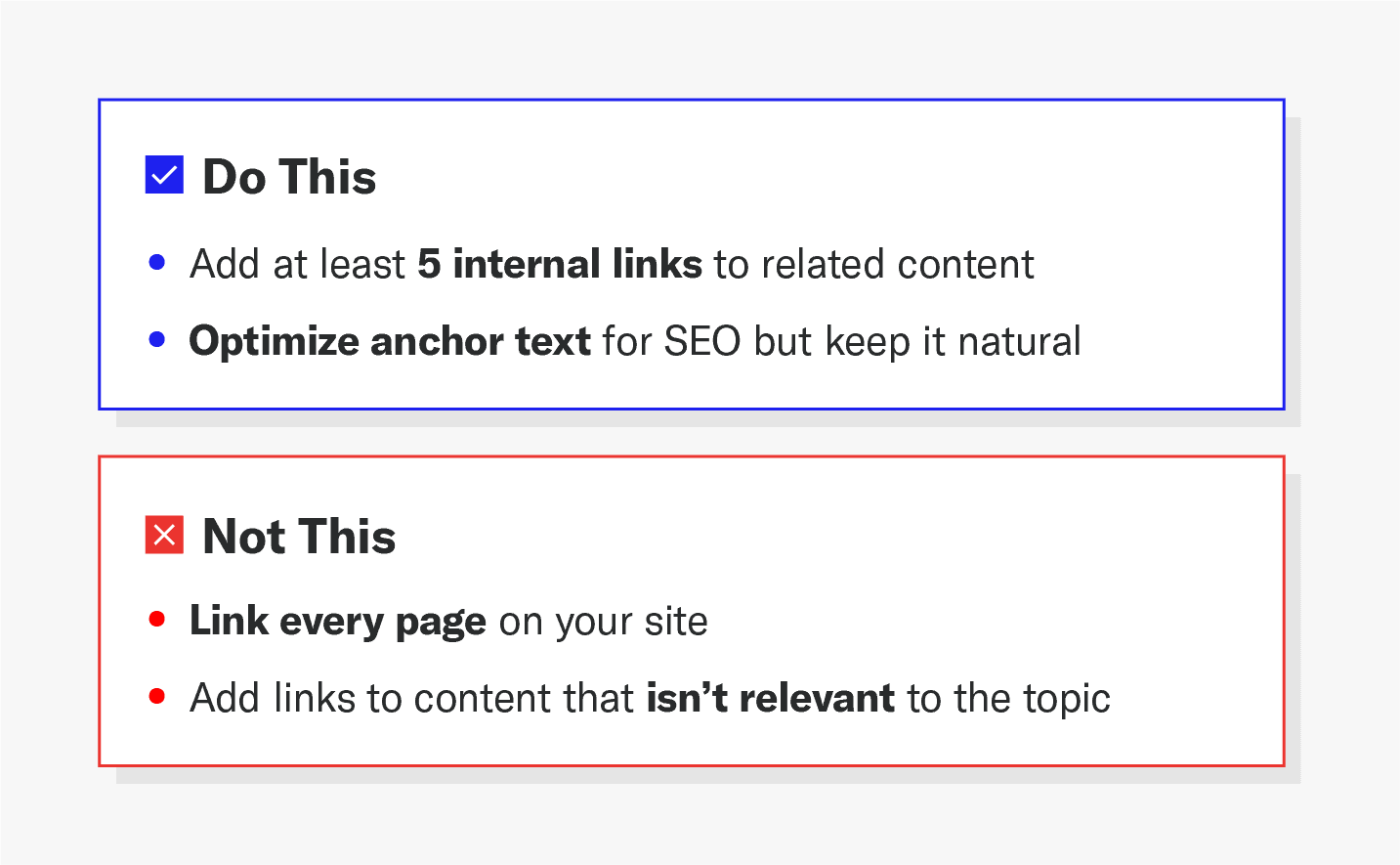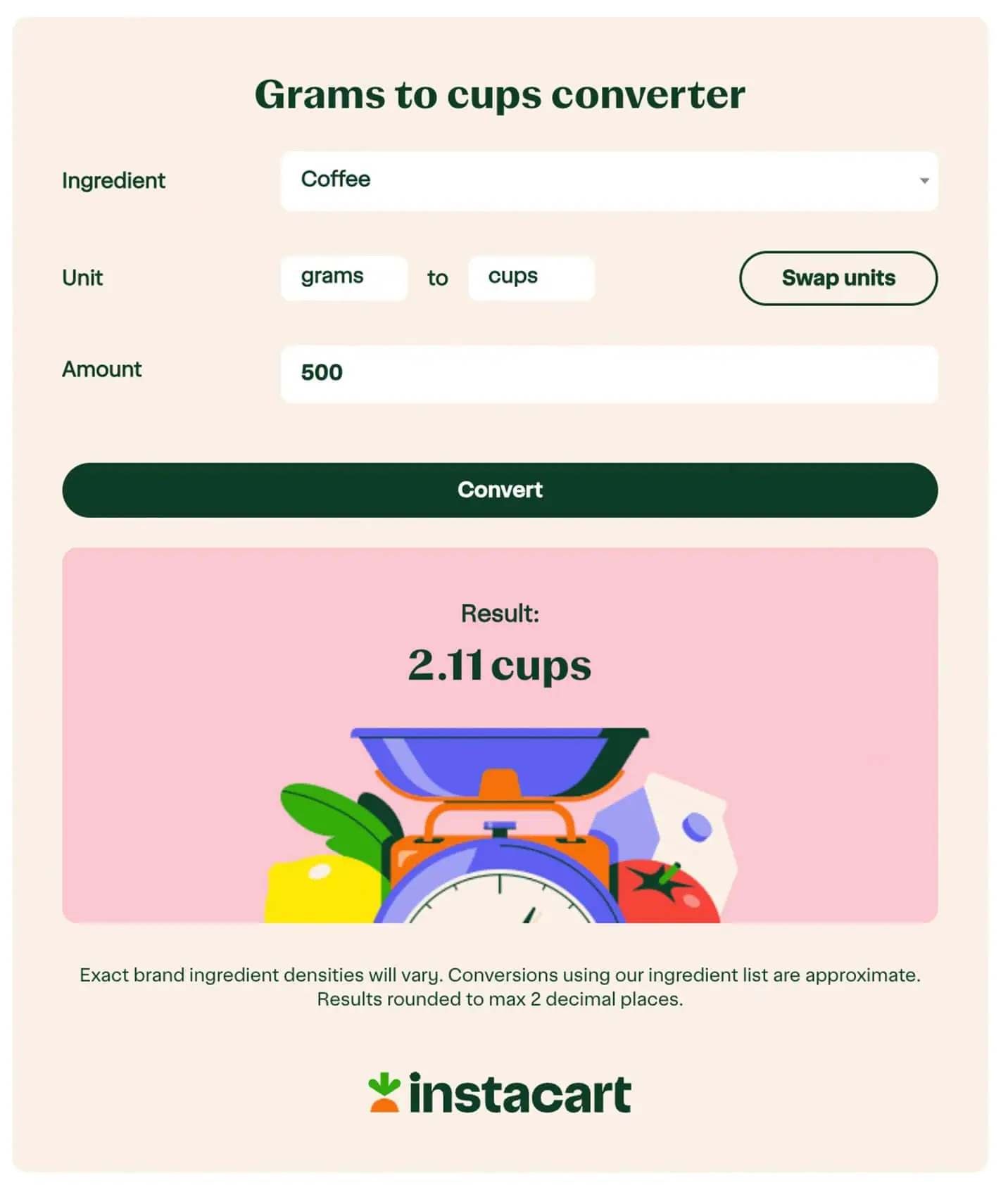Increasing website traffic by 250,000+ monthly visits — even 2,500 monthly visits at the start — can feel impossible.
It’s not.
Website traffic growth is at the top of any business’s KPIs because we know that traffic growth leads to:
- Brand recognition
- Revenue growth
- Repeat customers
… and more. With this in mind, we developed tried-and-true methods for long-term, sustainable growth in the thousands (and hundred-thousands).
At Siege Media, we’ve even helped our clients grow their website traffic by 500,000 visitors a month. We’ve accomplished this not once, not twice, but five times in the past five years — and even more during our lifetime.
Sustainable website traffic in the millions is possible with a repeatable, achievable strategy.
So what’s the process, and how do you replicate it so you can see your website visits grow at staggering rates? In this post, we explore our proven and dependable methods.
How To Increase Website Traffic
There isn’t one perfect method to increase website traffic, but we have a strategy that works — and the proof to back it up.
By repeatedly creating unique, well-researched top or middle-funnel content, promoting your work, and using SEO best practices, you can also expect to see growth.
Similar to the Skyscraper Technique, we believe it’s important to find link-worthy content to write about, but our strategy doesn’t stop there — we know it takes a mix of content-worthy topics, Domain Authority, linking, and repetition to create truly irreplaceable content.
Table of Contents
- Establish Product-Market Fit
- Perform and Use KOB Analysis
- Prepare a Project Plan
- Prioritize Organic Link Topics
- Create Great Content
- Optimize Internal Linking
- Keep Your Website Looking Fresh
- Update Content Regularly
- Repeat, Repeat, Repeat
1. Establish Product-Market Fit
Before you even consider implementing a new website traffic strategy, you need to establish product-market fit.
Product-market fit refers to the idea that your business’s products or services are being bought, used, and praised by your target audience.
If you can create a product that satisfies the wants and needs of your audience, you already took a giant step toward growing your traffic and business.
If you’re already seeing traction and you have a growing authority in the industry, your traffic will follow. Further, until you’ve created a product or service that satisfies product-market fit, you shouldn’t focus your efforts anywhere else.
2. Perform and Use KOB Analysis
KOB analysis, or Keyword Opposition to Benefit Analysis, is the crucial next step to growing your website visits.
Your KOB analysis considers your revenue potential and ROI in combination with your competition’s. Prioritizing your most beneficial, rankable content first can propel you toward more difficult topics in the future.
After enough time, effort, and subsequent rankings, your website traffic should grow and allow you to focus on other aspects of your business.
The KOB Equation for Content
Originally popularized by Todd Malicoat, KOB analysis has many different forms and levels of complexity.
For the purposes of this analysis and your own implementation, we’ll keep it relatively simple.
Traffic value is the estimated amount of revenue a page earns, and it’s calculated by multiplying the clickthrough rate (CTR) against all its ranking positions.
From there, each tool uses Google AdWords’ CPC to see what others would be willing to pay for that same traffic.
We use traffic value here because:
- It is a strong estimate of the real value of a page
- Helps approximate the monetary value when ranking for a topic
- Focuses on pages rather than individual keywords
Because traffic value focuses on page valuation, using the content ranking #1 for your target keyword or topic in your KOB equation is important.
Additionally, we need to know the keyword difficulty of our target topic.
This score gives us a quick snapshot of the competition on a given keyword set, which allows us to determine how quickly and easily we can rank for a particular topic.
We include the difficulty score in our KOB because it:
- Implies how competitive a keyword or topic is
- Alludes to the strength of the competitor’s backlinks
- Indicates the authority of competitor content
Because your revenue potential can be offset by the keyword difficulty, these two figures are used in an equation to determine the KOB score for a target keyword or topic set.
To determine whether the content fits your website, you can multiply the KOB score by a relevancy score on a 1-3 scale. If the content has low relevancy, multiply it by 1; if it is highly relevant, multiply it by 3 — employ 2 for moderately relevant content.
Adding relevancy to your KOB score doesn’t mean anything on its own. However, when placed side-by-side with other scores that you have calculated similarly, it provides a stronger indication of keyword potential for your site specifically.
Now that you understand what traffic value and difficulty mean, finding your KOB score takes a few simple steps:
- Plug in the necessary data: Popular SEO tools — such as Semrush, Moz, and Ahrefs — are great for finding and calculating traffic value and difficulty.
- Divide traffic value by the difficulty score: This will produce an initial KOB score to help you prioritize keywords and topics.
- Repeat the process: At Siege Media, our fleshed-out KOB sheets have more than 150 keywords or topics.
KOB Analysis Example
To give an example of this process in action, let’s look at the keyword “content marketing.” Using Ahrefs, we get back the following data:
At the surface level, we can see that this keyword is extremely competitive and has a fairly high monthly search volume.
It is important to note that the keyword research tool you utilize will affect your results. For example, if we utilize Keysearch rather than Ahref, we’ll find the service provides a difficulty of 66% for the same keyword. Experiment to see which keyword research tool provides the best results for your content.
But, if we dive below the surface, we can find other helpful information — namely, the potential value of each monthly visit and target-worthy longtail keywords.
First, enter “content marketing” into your preferred search engine and copy the URL of the highest-ranking result that you feel is most similar to the content you hope to create.
For this example, we used the “What is Content Marketing?” page from the Content Marketing Institute (CMI).
Next, we input this URL into Ahrefs to analyze the revenue and traffic opportunities available to us.
In our case, the estimated traffic to the page is 25,000 visits a month, based on 9,700 keywords. Plus, Ahrefs also calculates the estimated traffic value, which is $280,000 a month for the keyword “content marketing.”
To find our KOB score, we need to divide the traffic value by the keyword difficulty. Out of context, one KOB score means nothing, but additional research and a built-out topic database can help us use this score to prioritize how and when we work specific content into our strategy.
Remember, we can add meaning to our KOB score by including relevancy — this will help us better understand how relevancy for our particular site affects potential. Multiply your KOB score by its relevancy (1-3), with a 1 representing little to no relevancy and 3 representing a highly relevant keyword to our site.
After calculating your initial score, it’s time to address your content’s scoping. How long will you need to create each piece of content effectively? Add this to your sheet and divide the KOB score by the estimated hours; utilizing the Relevancy KOB score will provide you with a revised KOB that is more relevant to your website.
Now, you can reprioritize your keywords and topics. Clustering similar ideas or services can decrease the content you need to create while strengthening your strategized content.
Before creating a project plan, check out our KOB analysis spreadsheet for our ready-to-use document.
3. Prepare a Project Plan
With your research in hand, it’s time to start thinking about your project plan.
While your KOB analysis is great for finding low-competition, high-benefit keywords, you still need to prioritize target topics and keywords to make sure you’re capitalizing on the content you can rank for.
Ask yourself these three things when preparing your strategy:
- What is your Domain Authority (DA)?
- What internal resources do you have?
- Are you creating top-, middle-, or bottom-funnel content?
For example, if your DA is lower than 70, your best bet for strong content creation is to prioritize topics or keywords with a difficulty rating lower than 60 or 70.
On the flip side, if your domain authority is 70+, your prioritization should consider what you can rank for without promotion.
Understanding the strengths and weaknesses of your own domain will help you determine the content that is best for your business.
All in all, investing in your SEO content strategy and a team of content creators will allow you to grow and prioritize more projects, invest time and energy into revamping older posts, and create new content that is great the first time around.
4. Prioritize Organic Link Topics
It’s no secret that Siege Media has sent over 1 million outreach emails.
We started as a link generation company, but we’ve slowly stopped manual outreach for most of our clients.
Why? Because focusing on search-driven topics that emphasize a brand’s services, products, and expertise has led to a substantial increase in content performance through organic link building.
Instead of allocating double the time and resources to a post that will need manual outreach to rank, we have learned that focusing our talents on creating search-friendly content to begin with can bring in hundreds of links to a single post.
Plus, Google prioritizes branded content, so our focus on shareable and promotable aspects just wasn’t cutting it alone.
While it’s not worth completely throwing manual outreach — what we call digital PR at Siege Media — out the window, you may want to consider reevaluating how your content is gaining links.
If you want to focus on organic link opportunities, take a closer look at the Ahrefs keyword difficulty, what we call the organic link score, to get an idea of how your domain needs to rank to see success.
In general, we’ve found these domain rankings and Ahref difficulty scores play nicely:
| Ahrefs Keyword Difficulty Score | Domains Needed to Rank |
|---|---|
| 1-20 | 1-20 |
| 20-30 | 20-40 |
| 30-40 | 40-60 |
| 40-50 | 60-80 |
| 50-60 | 80-120 |
| 60-70 | 120-200 |
| 70-80 | 200-350 |
| 80+ | 350+ |
Downscaling your outreach to simply include link reclamation and nothing else may seem counterintuitive — but trust us, search-driven content is just as valuable (if not more valuable) to your website’s traffic as promotable content.
Take any statistics post, for example. For most of these posts, the people searching for a statistic are most likely looking to include it in their own content and link back to the original creator. This is organic link building.
This graphic about customer experience statistics by Smith.ai attracts attention because it is easy to read, has intriguing visuals, and offers readers plenty of raw data.
Other posts with interactive content — like calculators, cost pages, trends, and quizzes or pages — are high-search-driven topics that can gain hundreds of organic links.
Similar to service or product offerings, content that prioritizes organic link topics responds to the need and intent behind a search.
Who wouldn’t want to link to a post that answered an important question or solved a difficult problem?
5. Create Great Content
Now comes the hard part — actually creating the content (great content, that is).
It’s a no-brainer that you should always focus on creating good content, but do you know what you need to create content that’s 10x better than the competition?
Being two or three times better may not be enough for your pieces to rank.
Don’t bet on your semi-better piece winning the race. Implement simple changes to your content creation strategy to propel your content from good to great.
-
- Short URLs: Your URLs should be simple and identifiable. Use single-word tags where possible, and try to keep the keyword as the topic of the URL.
- Intriguing titles: Titles and title tags should be short, punchy, and clickable. We aren’t looking for clickbait, but they need to be interesting.
- PPB Introductions: The best strategy for introducing your post is to use the PPB—or Proof, Preview, Benefit—structure to draw the reader into your content.
- Scannable content: Using bullet points, short sentences, and paragraphs and breaking up content with visuals can help your readers scan and understand your content.
- Larger font and smaller margins: It can be difficult for the eye to track really small fonts or really large margins. We recommend using at least a 16pt font and keeping your margins at one inch.
- Differentiated copy: Don’t be afraid to shake up your content using our V.I.N.E.S. method—or one of our other actionable SEO writing tips—include videos, images, illustrated graphics, news stories, experts, and social media research to make your content stand out from the crowd.
- Video: To identify any holes in the search intent, enter your phrase into YouTube. What topics are people discussing on YouTube that aren’t covered by articles? Can you find any fresh inquiries in the comment section?
- Images: Examine Google’s “images” tab. Are the pictures ornamental or illustrative? Do they aid with conceptual visualization?
- News: Check out Google’s “news” tab. Are there any data studies or surveys that you might use? Is this a hot issue right now?
- Experts: Read trade blogs, subscribe to newsletters, and follow industry professionals on social media to obtain thought leadership ideas. This is most useful in the commercial or B2B sectors.
- Social: Search for your term on X (formally Twitter) or Reddit to see what results match the user’s intent. Remember that the lifestyle or B2C sectors benefit the most from this.
While these may seem like small adjustments, implementing them consistently can improve your content and lead to traffic growth.
Our infographic helps explain and summarize all the best practice data that can help you create content that is 10x better than your competitors.
If you can create strong content and execute your strategy well, it’s possible you could outrank all your competitors.
6. Optimize Internal Linking
Optimized internal linking is important to any content strategy because it helps your visitors — and search engine crawlers — navigate your content and site.
Internal links refer to links within the body of your content that link your post to other pages on your website. There are two types of internal links:
- Inbound internal links: Links that guide readers back to your post from a different website page.
- Outbound internal links: Links that guide readers away from your post to a different website page.
Giving readers (and Google) internal resources to research a topic further helps boost organic linking assets, keeps readers on your site longer, and determines website hierarchy.
Plus, internal links are great for spreading link equity.
Knowing what to link and what not to link can be difficult, especially if you have plenty of content on your website. As a rule of thumb, including between five and ten links per post is a safe bet for optimized internal linking.
Our best tips to optimize internal linking include:
- Keeping all content within two clicks of the homepage
- Ensuring your blog or learning center is in the navigation bar of your website
- Displaying 15+ posts on your blog homepage
- Linking sparingly and strategically
- Using clear anchor text
Internal linking can be daunting, so SEOs turn to automated solutions for assistance. At Siege Media, we’ve developed Rise, an internal linking solution that plugs directly into your WordPress installation. Forget auditing your links once a year; Rise has your back in real-time.
7. Keep Your Website Looking Fresh
Your website’s structure and overall design are key parts of your content; no matter what amazing content you create, it will need to rely on your website to stand tall. No one wants to wait for a website to load or get lost among mounds of text and an endless stream of blog posts.
Think about it—how long do you spend on a website when you can’t find what you want? Next website, please!
Great websites are also interactive. Visitors can sign up for a newsletter, utilize an on-page calculator, or interact with graphics that adjust their mouse movements. This keeps them entertained while providing them with the resources they need.
This interactive conversion calculator on Instacart’s Grams to Cups Converter page helps visitors convert ingredient units between one another; it’s an interactive solution that is as useful to use as it is beautiful.
The team at Siege Media offers blog and website design services for those who need help taking their content to the next level. Whether it’s your content hub, a specific landing page, or an entire CMS refresh, we’re here to help.
8. Update Content Regularly
After you have researched, created content, and focused on link building, it’s time to consider the sustainability of your posts.
There’s no guarantee that your rankings will hold, even if you’ve gained the #1 spot.
Fluctuation is normal, and content becomes outdated, but you can avoid losing all your progress with one simple method: content updates.
Creating and publishing a great blog post does not mean you are banned from ever updating it again. In fact, maintenance and refreshes to your content should be strategized concepts in your content marketing mix.
If your posts aren’t delivering updated facts and statistics, your site visitors will get fed up and leave. Annual content updates are a great way to ensure your readers receive the information they need without putting a ton of strain on your project plan or content team.
Who’s going to click on “Content Marketing Statistics for 2022” when your competition has created a “Content Marketing Statistics for 2024” post?
We also suggest keeping an eye on the SERPs for something we call freshness distance, or the distance between the oldest timestamp and the newest one. If you are consistently in the top 25%, there’s a good chance you’ll rank well.
Keep track of your content updates with a project tracker. This will help keep your team organized while achieving high-value wins with low effort.
If you stick to updating your content at a pace that works for your business, you’ll see great website traffic growth over time. Maybe even a growth of 250,000+ a month, sustainably.
9. Repeat, Repeat, Repeat
While the title of this post is intriguing and accurate, it has taken 10+ years for our Siege Media team to grind out this process.
In our opinion, the strategy itself is not that complicated. It’s the execution — and the repetition of that execution — that will increase your website traffic and improve your overall online presence.
Your best bet for traffic growth is our proven, tried-and-true strategy:
- Keyword analysis
- Content execution
- Strategized linking
- Content updates
- Repetition
Don’t believe us? After implementing our techniques, you can compare your pre-strategy ROI with your post-strategy ROI, or even estimate the potential change in your traffic with our marketing ROI calculator.
Upgrading Your Process
If you find this method complex and its implementation difficult, check out our content marketing services. With more than 10 years of experience and 100 team members, we can help you through the process.
Looking for an in-depth look into our method? Consider taking our SiegeLearn course, which includes access to more than 25 content marketing videos with tips about content creation, SEO, and outreach.
Soon, you can enjoy the benefits of receiving 250,000+ website visits with our strategy and experience.


